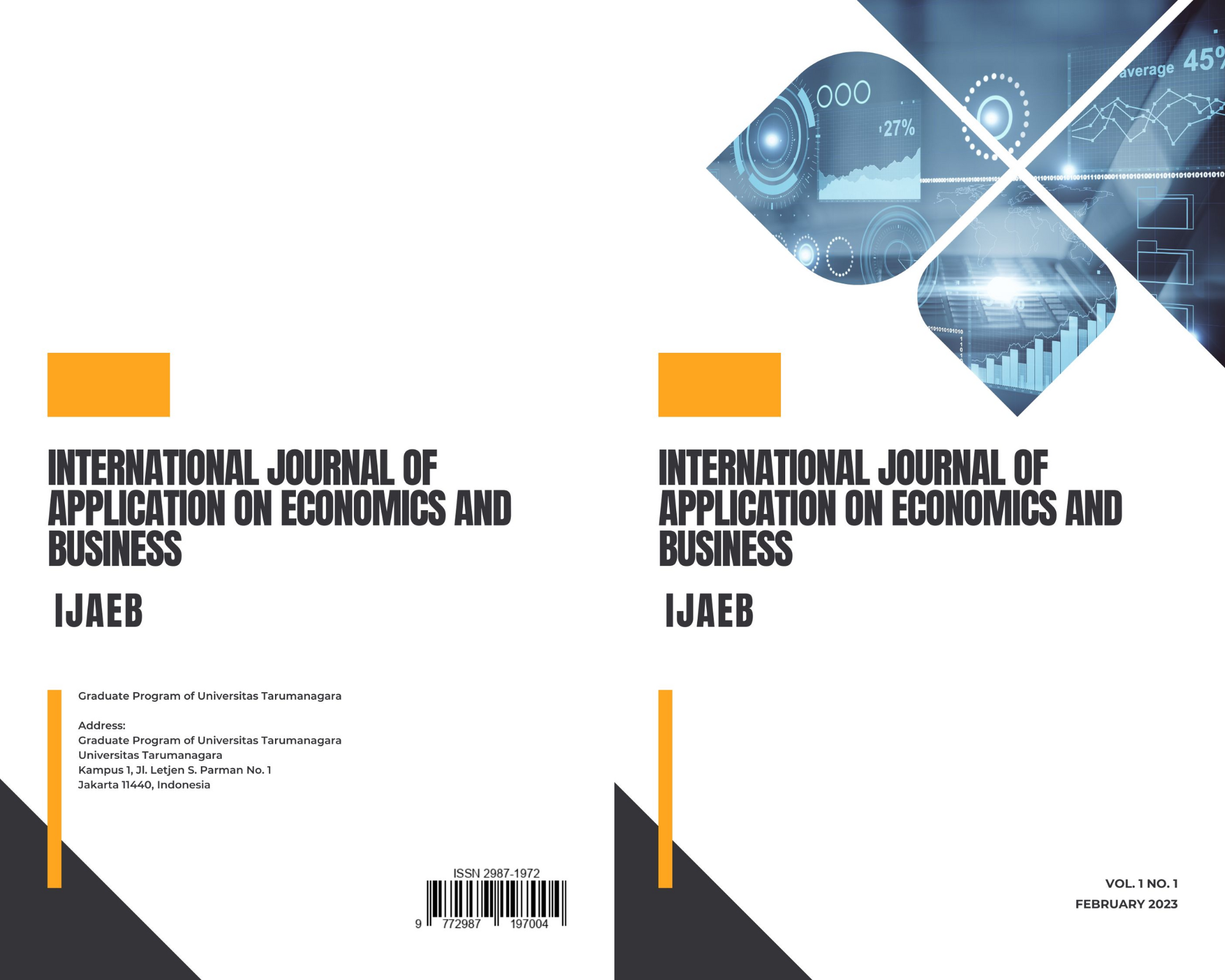The Impact of Financial Literacy, Financial Socialization Agents, and Parental Norm on Money Management of Universitas Tarumanagara Students
Main Article Content
Abstract
The aim of this research is to determine the impact of financial literacy, financial socialization agents, and parental norm on money management of Universitas Tarumanagara students. This study used 163 respondents from the students of the Faculty of Economics and Business, Universitas Tarumanagara. Data collected in this study using a questionnaire. The research design in this study used descriptive research with the sampling technique used non-probability sampling technique, namely convenience sampling. Analysis of the data used is the Structural Equation Model (SEM) using the Smart-PLS version 3.3.5 software as a data analysis tool. The results obtained in this study are financial literacy has a positive and significant impact on money management of Universitas Tarumanagara students, financial socialization agents have a positive and significant impact on money management of Universitas Tarumanagara students, and parental norm has a positive and significant impact on the money management of Universitas Tarumanagara students.
Article Details

This work is licensed under a Creative Commons Attribution-NonCommercial-ShareAlike 4.0 International License.
This journal provides immediate open access to its content on the principle that making research freely available to the public supports a greater global exchange of knowledge.
IJAEB by Graduate Program of Universitas Tarumanagara is licensed under a Creative Commons Attribution-NonCommercial-ShareAlike 4.0 International License.. Permissions beyond the scope of this license may be available at https://journal.untar.ac.id/index.php/ijaeb
References
Y. Pusparisa, “Dibanding Generasi Lain, Z Hasilkan Pertumbuhan Utang Paling Besar”, 2021. https://databoks.katadata.co.id/datapublish/2021/05/23/dibanding-generasi-lain-z-hasilkan-pertumbuhan-utang-paling-besar.
S. D. D. Sundarasen, M. S. Rahman, N. S. Othman, J. Danaraj, Impact of financial literacy, financial socialization agents, and parental norms on money management, Journal of Business Studies Quarterly, vol. 8, 2016, pp. 140-156.
S. Ward, Consumer socialization. Journal of consumer research, vol. 1, 1974, pp. 1-14.
S. Shim, J. J. Xiao, B. L. Barber, A. C. Lyons, Pathways to life success: A conceptual model of financial well-being for young adults, Journal of Applied Developmental Psychology, vol. 30, 2009, pp. 708-723. DOI: https://doi.org/10.1016/j.appdev.2009.02.003
J. M. Hogarth, M. A. Hilgert, Financial knowledge, experience and learning preferences: Preliminary results from a new survey on financial literacy, Consumer Interest Annual, vol. 48, 2002, pp. 1-7.
C. L. J. Mason, R. M. S. Wilson, Conceptualizing fi-financial literacy, Occasional paper, vol. 7, 2000, pp. 3-40.
R. Uznienė, Media–Agents of socialization, Regional Formation and Development Studies, vol. 8, 2014, pp. 231-239.
M. C. Clarke, M. B. Heaton, C. L. Israelsen, D. L. Eggett, The acquisition of family financial roles and responsibilities, Family and Consumer Sciences Research Journal, vol. 33, 2005, pp. 321-340. DOI: https://doi.org/10.1177/1077727X04274117
M. Ardiana, Kontrol Diri, Pendidikan Pengelolaan Keuangan Keluarga, Pengetahuan Inklusi Keuangan Siswa Pengaruhnya terhadap Perilaku Menabung Siswa SMK Se Kota Kediri., Jurnal Ekonomi Pendidikan dan Kewirausahaan, vol. 4, 2016, pp. 59-75. DOI: https://doi.org/10.26740/jepk.v4n1.p59-75
Investopedia, Money Management, What is money management? 2016. www. investopedia.com/terms/m/moneymanagement.asp
M. Taylor, Measuring financial capability and its determinants using survey data, Social Indicators Research, vol. 102, 2011, pp. 297-314.
R. Pappang, N. Anastasia, The impact of perceived financial literacy and parental norm towards money management of bidikmisi student, International Journal of Business Studies, vol. 2, 2019, pp. 71-77.
L. J. Kotlikoff, B. D. Bernheim, Household financial planning and financial literacy, Essays on saving, bequests, altruism, and life-cycle planning, 2001, pp. 427-478.
T. Kretschmer, A. Pike, Links between nonshared friendship experiences and adolescent siblings' differences in aspirations, Journal of adolescence, vol 33, 2010, pp. 101-110. DOI: https://doi.org/10.1016/j.adolescence.2009.05.001
A. C. Lyons, E. Scherpf, H. Roberts, Financial education and communication between parents and children, The Journal of Consumer Education, vol. 23, 2006, pp. 64-76.
M. Buijzen, P. M. Valkenburg, The unintended effects of television advertising: A parent-child survey, Communication research, vol. 30, 2003, pp. 483-503. DOI: https://doi.org/10.1177%2F0093650203256361
J. Bamforth, C. Jebarajakirthy, G. Geursen, Understanding undergraduates’ money management behaviour: a study beyond financial literacy, International Journal of Bank Marketing, vol. 36, 2018, pp. 1285-1310 DOI: 10.1108/IJBM-05-2017-0104
A. N. Yushita, Pentingnya literasi keuangan bagi pengelolaan keuangan pribadi, Nominal: Barometer Riset Akuntansi dan Manajemen, vol. 6, 2017, pp. 11-26. DOI: https://doi.org/10. 21831/nominal.v6i1.14330
W. Abdillah, J. Hartono, Partial least square (PLS): Alternatif structural equation modeling (SEM) dalam penelitian bisnis, vol. 22, Yogyakarta: Andi, 2015, pp. 103-150.
M. Sarstedt, C. M. Ringle, D. Smith, R. Reams, Jr, J. F. Hair, Partial least squares structural equation modeling (PLS-SEM): A useful tool for family business researchers, Journal of family business strategy, vol. 5, 2014, pp. 105-115, DOI: https://doi.org/10.1016/j.jfbs.2014.01.002
K. Tsuroyya, I Nuryana, The Influence of Attitudes, Internal Locus, and Financial Socialization Agents on Financial Management Behavior, Economic Education Analysis Journal, vol. 10, 2021, pp. 188-201. DOI: https://doi.org/10.15294/eeaj.v10i1.44670
I. Ajzen, The theory of planned behavior, Handbook of Theories of Social Psychology, vol. 1, 1991, pp. 438–459.



